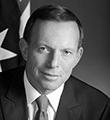Today COAG held its first special meeting on counter-terrorism in a decade.
Prime Minister John Howard hosted the last counter-terrorism COAG in 2005.
Today we agreed to – and released – Australia’s Counter-Terrorism Strategy. This is a comprehensive long-term national counter-terrorism blueprint.
The strategy sets out the counter-terrorism arrangements in place across Australia. It provides information to the community on the terrorist threat and what our governments are doing to counter it.
The strategy involves five core elements:
- challenging violent extremist ideologies;
- stopping people from becoming terrorists by working with community members who are often in the best position to identify individuals at risk and help steer them away from violent extremism;
- shaping the global environment, including through our military contribution to the coalition against ISIL;
- disrupting terrorist activity within Australia through the joint efforts of our law enforcement and intelligence agencies; and
- effective response and recovery arrangements in the event of an attack.
We also agreed to introduce a clearer and simpler National Terrorist Threat Advisory System. This was recommended by the Commonwealth Government’s Review of Australia’s Counter-Terrorism Machinery released in February.
The new system will replace the current unclassified four tier Public Alert system and the classified ASIO threat level with a single, publicly notifiable five‑tier National Terrorism Threat Level system.
Any changes to the threat level under the new system will be accompanied by a statement providing more information on what the new threat level means, where the threat is coming from, what the potential targets are and the means by which an attack may be perpetrated.
It will be introduced later this year following consultation with the community. We need to ensure organisations understand the implications of the new System and whether their own internal security procedures and guidelines will need to be reviewed.
Australians currently face the most significant threat from terrorism in our nation’s history. In September 2014, the National Terrorism Public Alert level was raised to HIGH – which means a terrorist attack is likely.
Since then, there have been two attacks in Australia, and security and law enforcement agencies have disrupted a further six attacks. Twenty three people have been charged as a result of eight counter-terrorism operations – almost a third of all terrorism-related charges since 2001.
There are now over 120 Australians fighting in Syria and Iraq. Approximately 160 Australians actively support extremist groups through financing and recruitment.
The threat of terrorism is real and continues to grow and evolve.
The resilience and cohesion of our community is our best defence against violent extremism. It is our greatest asset in preventing, responding to and recovering from a major terrorist attack.
Australia’s Counter-Terrorism Strategy can be found at www.nationalsecurity.gov.au
23 July 2015

